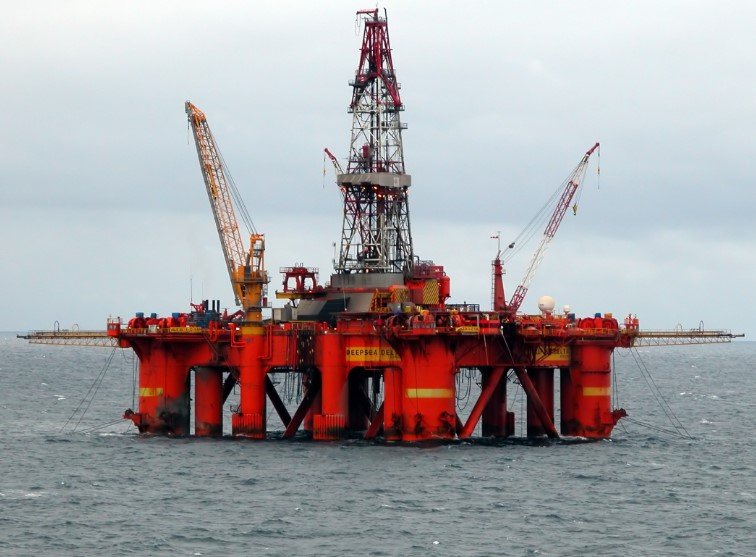The world’s largest banks poured hundreds of billions into fossil fuel projects in 2024 — a sharp pivot from their previous retreat — reigniting global concerns over financial institutions backtracking on climate action.
A fresh report says the biggest names in banking ramped up their lending and underwriting to oil, gas, and coal companies, raising eyebrows just as global climate goals are slipping further from reach.
Climate Promises Take a Backseat as Dollars Flow In
Banks aren’t just nudging the line anymore — they’re barreling past it. According to the 16th annual Banking on Climate Chaos report, 65 of the top global lenders collectively financed $869 billion in fossil fuel projects last year. That’s up by $162 billion compared to 2023.
This reversal marks the first significant uptick since 2020, when fossil financing began its slow retreat amid mounting pressure from climate groups and regulators. Now, it’s clear that pressure is easing — or at least being ignored.
In a surprising twist, traditional UK banks like Barclays, HSBC, NatWest, and Lloyds joined U.S. giants in stepping up their fossil exposure. Many had previously touted climate leadership roles or ESG ambitions. Yet in 2024, those ambitions took a serious hit.
One sentence says it all: green promises got shelved, and black gold got bankrolled.

Lending Surged — And It Wasn’t Subtle
Here’s where it gets uncomfortable. The biggest increase came from straight-up lending, not equity underwriting or complex instruments. Just old-fashioned loans.
Banks issued $467 billion in fossil fuel loans — up from $422 billion in 2023.
A single sentence is enough here: the bulk of the money flowed through the front door.
And here’s a snapshot of what that looks like:
| Year | Fossil Fuel Lending | Total Fossil Financing |
|---|---|---|
| 2021 | $459B | $742B |
| 2022 | $450B | $689B |
| 2023 | $422B | $707B |
| 2024 | $467B | $869B |
The data was pulled from bank disclosures, financial databases, and platforms like Bloomberg, LSEG, and NGO-driven lists like the Global Oil and Gas Exit List (GOGEL) and Global Coal Exit List (GCEL).
US Politics Played a Bigger Role Than Expected
Since Donald Trump’s 2024 election win, there’s been a broader market shift. Several companies, especially in the U.S., are relaxing their climate strategies — and banks are following suit.
A few examples speak volumes:
-
Major American banks exited the Net Zero Banking Alliance, a climate-focused group under the UN-backed GFANZ umbrella.
-
ESG-focused funds saw outflows, and climate investing cooled, particularly in the U.S.
-
Internal bank policies on fossil fuel limits were quietly shelved or heavily diluted.
What’s ironic is that even as wildfires, droughts, and storms intensified worldwide, financial strategies still turned colder on climate.
One industry analyst put it bluntly: “It’s like they forgot there’s a planet at stake.”
European Banks Waver, But Don’t Fully Fold
European lenders didn’t completely abandon ESG talk — but actions didn’t always match the mood music.
HSBC, for example, had previously promised to cut fossil fuel funding for new oil and gas fields. Yet, in 2024, the bank still made fresh commitments to fossil giants operating in regions like West Africa and Southeast Asia.
Barclays, another vocal supporter of climate causes, increased its exposure to gas pipeline operators and LNG infrastructure projects.
And then there’s Lloyds — it maintained stricter rules on thermal coal but gave more breathing room to oil and gas developers.
It’s not that these banks became full-on climate villains overnight. But when the tide turned, they didn’t exactly hold their ground.
Campaigners Call It a Betrayal
Environmental groups that have spent years pressuring financial institutions feel let down. Some used the word “betrayal” outright.
Rainforest Action Network, Reclaim Finance, and several other groups behind the Banking on Climate Chaos report accused lenders of turning their backs on the 2015 Paris Agreement, which aimed to limit global temperature rises.
One frustrated campaigner told PA Media, “You can’t say you support climate action and then pump $869 billion into the very industry driving the crisis.”
The report didn’t mince words either — it called this wave of financing a “retreat from responsibility.”
The numbers back that up: since the Paris Agreement was signed, global banks have collectively financed $7.9 trillion in fossil fuel projects. That figure is nearly equivalent to the combined annual GDP of Germany and Japan.
Some Banks Still Held the Line
Not every bank played ball with fossil fuel expansion. A few notable holdouts, mostly smaller European and development-oriented lenders, tightened restrictions in 2024. They focused instead on renewables, clean transport, and sustainable agriculture.
It’s a small club, but one worth mentioning.
-
Triodos Bank (Netherlands) continued refusing fossil clients altogether.
-
Crédit Coopératif (France) reaffirmed its divestment policies and stuck to them.
-
ASN Bank (Netherlands) increased transparency around ESG and held firm on fossil moratoriums.
Still, these are minnows in a shark tank. Their combined assets are a drop in the ocean compared to JPMorgan, Citi, or HSBC.
What Happens Next? That’s the Billion-Dollar Question
It’s unclear whether this increase is a blip or the start of a bigger U-turn. Some insiders say it’s a response to energy market instability and global demand for oil and gas. Others think the political shift — particularly in the U.S. — has simply made banks feel safer loosening the reins.
No one’s expecting a sudden crash in fossil financing this year. In fact, early 2025 activity suggests the trend might continue. Especially with ongoing wars, energy insecurity, and elections clouding the horizon.








